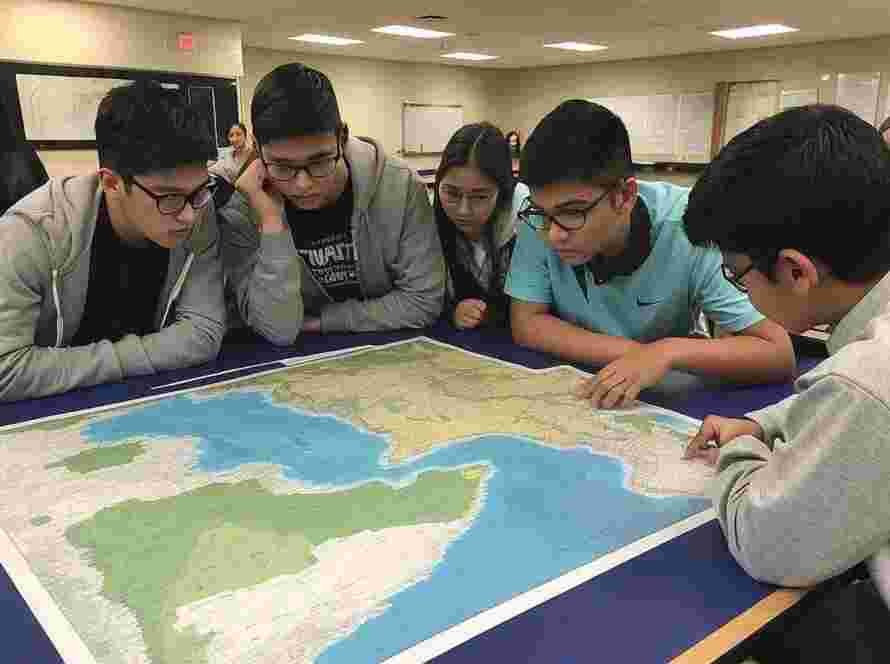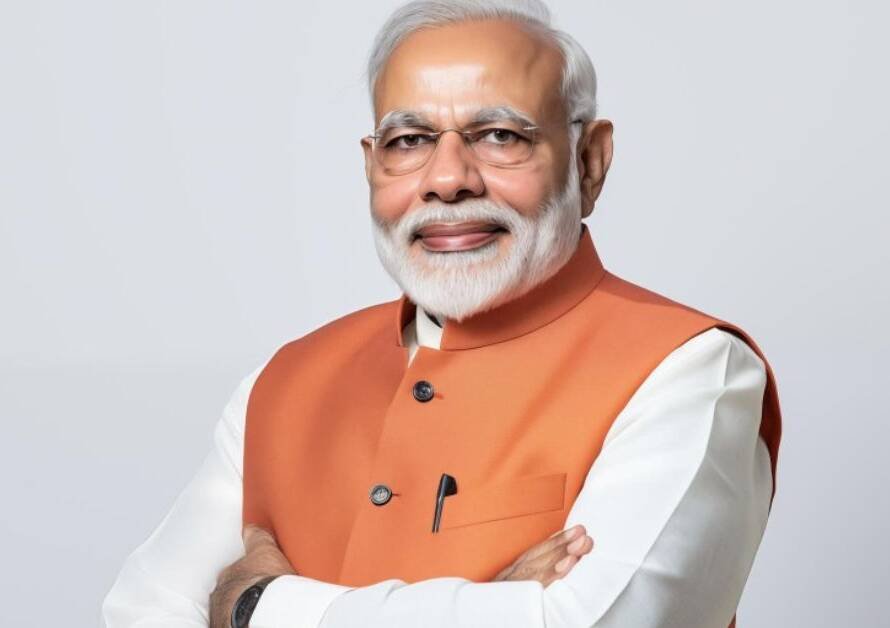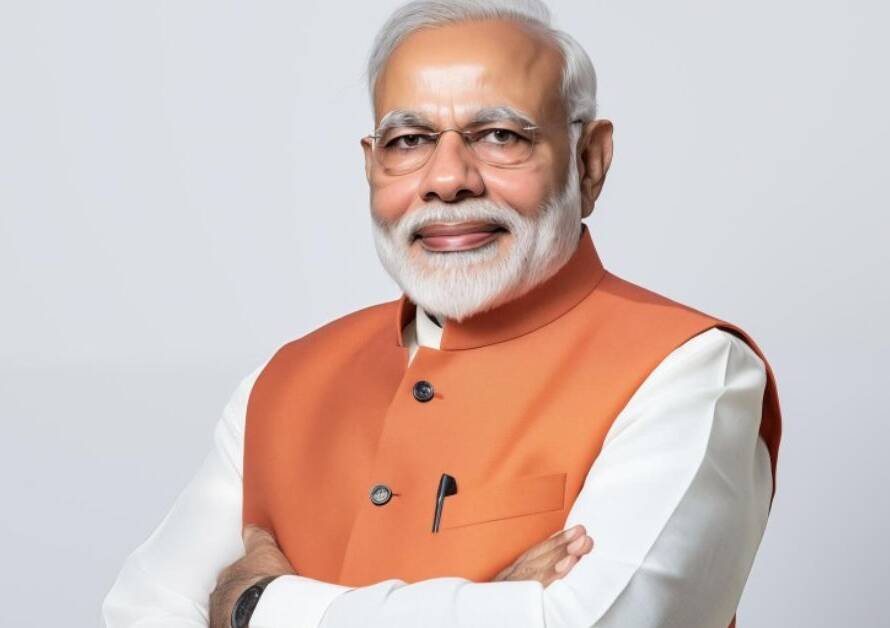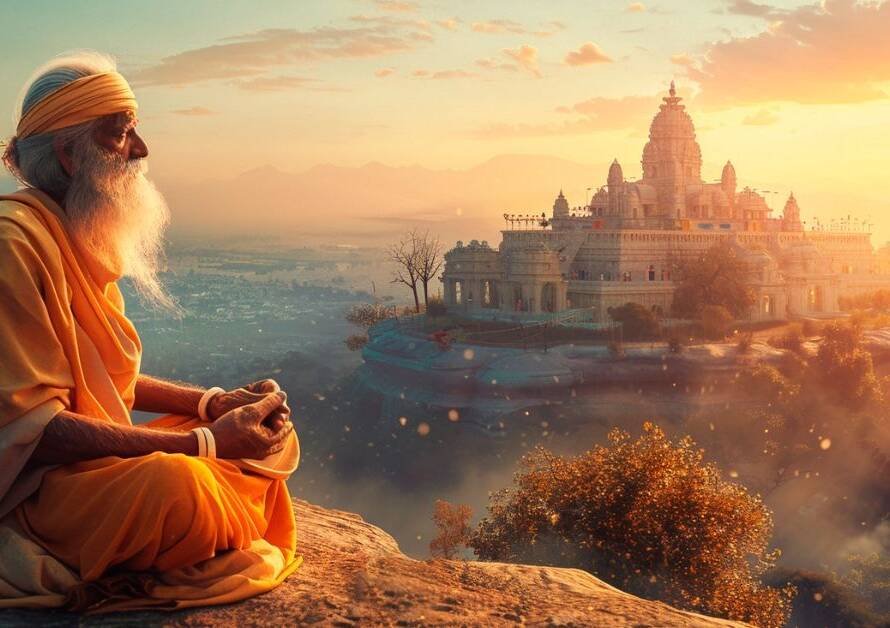The recent demonstrations in Mumbai, followed by similar ones in New Delhi, where approximately 100,000 Muslims gathered and disrupted the city, culminating in an attempt to damage a Hindu nationalist idol, are deeply concerning. These events should alarm the central government, the ruling party, Hindus, and all pro-nationalist groups. The show of unity by anti-nationalist and anti-Hindutva forces, flexing their ability to cause internal disturbances at the mere call of their religious and political leaders, signals an organized effort to disrupt national peace and target the very fabric of our society. This is not an isolated event, and there is a real risk that similar displays of power may soon occur in other cities, as these groups aim to assert their influence further.
Adding to this distress is the recently uncovered plot to orchestrate mass killings of Hindus during the upcoming Kumbh Mela in Prayag. This discovery highlights the malicious intent of certain elements to undermine and destroy Hindus, Hinduism, and our progressive, democratic nation by any means—no matter how inhuman, immoral, or unethical. The recurring targeting of Hindus in recent months is a well-documented reality. While I won’t delve into each of these incidents—given that they are widely shared on social media and already the subject of ongoing discussions—I cannot overstate the severity of the situation.
Over the past 100 days, the morale of these anti-nationalist forces has received a significant boost. They have strengthened their position in Parliament, and with the backing of opposition parties, they have organized into a formidable alliance. This coalition of anti-Hindu, anti-nationalist forces now perceives itself as victorious and is intensifying its plans, particularly as state assembly elections approach. In contrast, pro-Hindutva and pro-nationalist groups appear largely passive, expressing concern only on social media while blaming the government for inaction.
Yet, in the past month, there has been a glimmer of hope. A few isolated voices on social media have started discussing the need for the formation of a National Hindu Board and Act—modeled after the Waqf Board and Christian Mission Board—to safeguard the interests of Hindus, who, despite being the majority, are under threat from a minority that constitutes less than 20% of the population. Unfortunately, these are fragmented efforts, and there seems to be no concerted attempt to unite these scattered groups.
Hindus today seem to have forgotten the power of unity and the wonders it can achieve. The deliberate division of our society by previous ruling parties—along caste, community, sect, and language lines—has weakened us and made us vulnerable to these forces. It is a shame that we have allowed ourselves to be divided, and the situation we find ourselves in today is of our own making. Many Hindus, along with pro-nationalist individuals, are preoccupied with their personal, selfish pursuits—focused solely on making money and enjoying life. The larger concerns of society, Hinduism, and the nation seem to be far from their priorities.
Instead of taking proactive steps to address these issues, many are content with venting their frustrations online, expecting the government to solve everything without offering any meaningful support. Can any leader within the pro-Hindu, pro-nationalist camp mobilize a crowd of 100,000 on a single call, as recently demonstrated by Muslim groups? Unfortunately, the answer seems to be no. Yet there are numerous individuals within opposition, anti-Hindu, and anti-nationalist forces who can, and have, shown their ability to do so.
By failing to unite, by remaining inactive, and by focusing only on blaming the government, Hindus and pro-nationalist groups are digging their own graves. How can we expect anyone to help us if we are unwilling to help ourselves? Our lack of unity and tepid support in the recent parliamentary elections may be hindering the government’s ability to act swiftly and effectively. Meanwhile, the opposition and anti-nationalist forces have gained momentum, viewing the recent electoral results as a moral victory. They are now accelerating their efforts to destabilize the country, derail our economic progress, and pursue their ultimate goal: converting India into an Islamic state governed by Sharia law.
If we do not act now, we may not get another chance. For the past 75+ years, we have been steadily losing ground, and the pace is quickening by the day. Our divisions and complacency have allowed this situation to fester. We can no longer afford to merely forward messages and comments on social media while pointing fingers at the government.
It is time to arise, awake, unite, and take decisive action to build a strong, democratic, and Hindu nation. If we fail to unite now, we risk losing everything we hold dear.
Example and Case Studies
To support the arguments in message above, let’s incorporate examples and case studies that demonstrate the challenges faced by Hindus and nationalists, as well as the importance of unity and proactive efforts in overcoming them.
The Shaheen Bagh Protests (2019-2020)
One of the most notable demonstrations where a significant number of people gathered at the call of their leaders was the Shaheen Bagh protests in Delhi. The protests began in response to the Citizenship Amendment Act (CAA), which many Muslims perceived as discriminatory. These protests lasted for over three months, with a large number of protesters—primarily Muslim women—occupying public roads, disrupting traffic, and affecting daily life for millions of people in the capital.
The protest served as an example of how a single call from political and religious leaders can mobilize large masses to assert their community’s strength. This display of unity and determination forced the government to engage in dialogue and brought national attention to their grievances.
Case Study Reflection: The Shaheen Bagh protests highlight the power of organized, peaceful mobilization. It demonstrates how religious and political forces can unite a community to flex their collective strength. For pro-Hindutva groups, it underscores the need for better organization and a proactive approach to safeguard their interests.
Karauli Communal Violence (2022)
In April 2022, a Ram Navami procession in Karauli, Rajasthan, was attacked by a mob allegedly composed of Muslim youth. The violence led to property damage, injuries, and widespread fear among the Hindu community. The clashes were sparked by the use of religious slogans and tensions between the two communities in the region.
This incident highlights how communal violence is often instigated in religious contexts, exacerbating Hindu-Muslim tensions. Despite the violence, pro-Hindu groups failed to rally sufficient public or political support to address the concerns of the affected community.
Case Study Reflection: Karauli is an example of how anti-Hindu elements may resort to violence during religious festivals to target Hindus. The lack of a unified response from Hindu leaders and pro-nationalist groups indicates a gap in coordinated efforts to defend Hindu interests.
Recent Discoveries of Terror Plots Against Hindus
The recent revelation of a plot to target Hindus during the Kumbh Mela is one of the most disturbing examples of the threats faced by the community. Intelligence agencies have foiled attempts by extremist elements to carry out large-scale violence during religious gatherings, aiming to destabilize the nation and spread fear.
These plots were meant to target Hindu religious gatherings, highlighting the vulnerability of the community during major events. In such cases, the government’s prompt action prevented a tragedy, but these threats are a constant reminder of the dangers posed by extremists.
Case Study Reflection: This case shows the extent of threats faced by Hindus in the country, especially during religious events. It underscores the need for greater vigilance and organization among Hindu groups to defend their community from such malevolent forces.
Communal Clashes in West Bengal (Post-2021 Elections)
After the 2021 West Bengal state elections, there were numerous reports of violence against Hindus and BJP supporters. Many of these attacks were attributed to political and communal animosities, with reports of homes being looted and individuals being assaulted for their political affiliations. Several Hindu families were displaced due to the violence, and there were allegations that local authorities were not doing enough to protect the victims.
This post-election violence showcased how vulnerable certain communities can become when political and religious forces join hands against them. Despite cries for help, the pro-Hindutva forces in the state struggled to gather national attention or aid.
Case Study Reflection: This example illustrates how political and communal interests can merge, leading to attacks on Hindus. The lack of a cohesive response from Hindu and nationalist organizations reveals the challenges in organizing effective protection for the community.
Ram Janmabhoomi Movement (1990s)
The Ram Janmabhoomi movement, which eventually led to the construction of the Ram Mandir in Ayodhya, is an important example of the power of Hindu unity. In the late 1980s and 1990s, millions of Hindus came together under the banner of the Vishva Hindu Parishad (VHP) and other nationalist organizations to demand the reconstruction of a temple at the birthplace of Lord Ram. The movement gained significant traction, despite opposition from political and religious groups.
The movement faced several setbacks, including political turmoil and legal challenges, but the unwavering commitment of Hindus to the cause ultimately resulted in the Supreme Court’s landmark decision in 2019 that cleared the way for the construction of the Ram Mandir.
Case Study Reflection: The Ram Janmabhoomi movement serves as a model for how unity, perseverance, and collective action can achieve monumental victories for Hindu causes. It highlights the strength of a united Hindu front and the importance of rallying behind a common cause.
Conclusion
These examples and case studies demonstrate the varying degrees of threat, organizational unity, and the consequences of division within the Hindu community. They emphasize the need for greater solidarity among Hindus and pro-nationalist forces to counter the growing challenges posed by anti-nationalist and anti-Hindu groups. Through organized efforts, like the Ram Janmabhoomi movement, and proactive responses to threats, the community can better safeguard its interests and the nation’s democratic fabric.
If Hindus fail to unite now, the threats will continue to grow, and opportunities to preserve the nation’s values and progress may slip away. This is a critical time for all pro-Hindutva and nationalist groups to come together and take meaningful action.
What should be our next steps
The next step to address the challenges described would involve both immediate and long-term actions to unify and mobilize Hindus and pro-nationalist groups. Here’s a detailed roadmap for the next steps:
Organizational Unity: Formation of a National Hindu Board
Objective: Establish a centralized body similar to the Waqf Board or Christian Missionary Boards to protect Hindu interests. This body can serve as an umbrella organization for various fragmented Hindu groups.
Action Plan:
oEngage leaders from different Hindu organizations, religious sects, and communities.
oHold nationwide consultations to gather input and create a formal structure for the board.
oAdvocate for legislative backing, similar to the legal provisions that support other religious bodies.
Strategic Outreach and Alliance Building
Objective: Build stronger alliances among Hindu leaders, nationalist organizations, and even moderate political elements to create a united front.
Action Plan:
oOrganize regional and national conferences to foster dialogue and cooperation between Hindu leaders, political figures, and grassroots movements.
oCollaborate with pro-nationalist groups to create a shared agenda focusing on protecting Hindu culture, religion, and national interests.
Mass Mobilization Campaign
Objective: Demonstrate the strength of Hindu unity through peaceful mass gatherings and organized events.
Action Plan:
oUse social media, local networks, and religious platforms to mobilize Hindus for peaceful rallies, demonstrations, or marches.
oHold cultural and religious events that reinforce unity, using them as opportunities to bring attention to pressing issues and encourage mass participation.
oMobilize support through digital platforms, religious festivals, and local gatherings to increase engagement.
Proactive Political Engagement
Objective: Strengthen political representation and influence policies that safeguard Hindu interests.
Action Plan:
oEncourage voter registration and participation in upcoming elections to ensure strong political representation.
oSupport and promote pro-Hindutva and nationalist candidates who align with the community’s values and interests.
oEngage with current government leaders to ensure they are aware of the community’s concerns and to hold them accountable for taking action.
Public Awareness and Media Campaigns
Objective: Raise awareness about the issues faced by Hindus and highlight the need for unity and action.
Action Plan:
oLaunch a coordinated media campaign (both online and offline) to highlight key issues such as communal violence, anti-Hindu agendas, and threats to the nation.
oUse social media platforms to share educational content, success stories, and case studies like the Ram Janmabhoomi movement to inspire action.
oDevelop counter-narratives to challenge anti-nationalist and anti-Hindutva propaganda effectively.
Grassroots Initiatives and Community Building
Objective: Strengthen grassroots-level organization and local support networks.
Action Plan:
oOrganize community discussions, seminars, and workshops at the local level to educate people on the importance of unity and collective action.
oEncourage self-defense workshops, legal awareness programs, and mutual aid groups to empower local communities.
oCreate neighborhood groups to provide mutual support and act quickly in case of communal violence or unrest.
Legal and Policy Advocacy
Objective: Strengthen legal frameworks to protect Hindu religious sites, cultural practices, and communities.
Action Plan:
oForm a legal advisory group to monitor anti-Hindu activities and file cases against perpetrators.
oAdvocate for policy changes that ensure equal treatment of religious groups, particularly in cases of temple administration, protection of cultural heritage, and religious freedoms.
oPush for laws that safeguard Hindu religious festivals, processions, and events from targeted violence.
Increased Vigilance and Security for Religious Events
Objective: Prevent attacks during major Hindu religious gatherings, like the Kumbh Mela.
Action Plan:
oCoordinate with local authorities to ensure security measures during religious festivals.
oForm volunteer security teams to work with law enforcement at events where large crowds of Hindus are expected.
oUtilize technology, such as CCTV, drones, and communication tools, to monitor potential threats during mass gatherings.
Youth Engagement and Education
Objective: Empower the next generation to understand and take pride in their heritage, and engage them in national issues.
Action Plan:
oCreate educational programs, both in schools and online, to teach Hindu youth about their culture, history, and responsibilities toward the nation.
oSet up youth wings of nationalist and Hindu organizations to foster leadership and civic responsibility.
oEncourage Hindu students and young professionals to take active roles in community service, politics, and advocacy.
Long-Term Vision: Building a Strong, Progressive Hindu Nation
Objective: Develop a 5-10 year plan that outlines the vision for a united Hindu nation.
Action Plan:
oDraft a vision document detailing the long-term goals of the National Hindu Board, addressing issues like economic development, education, cultural preservation, and religious harmony.
oFoster interfaith dialogues to ensure that Hindu nationalism does not alienate other communities but works toward a more harmonious and inclusive nation.
oDevelop programs for sustainable economic and social progress, focusing on education, employment, and infrastructure in Hindu-majority areas.
Final Thoughts
The roadmap begins with immediate steps of organizational unity and extends into long-term goals that aim for the preservation and progress of a strong Hindu nation. Mobilization, alliance-building, and consistent efforts are the key components needed to address the challenges ahead.
Act Now: If these steps are not taken soon, the window of opportunity may close. It’s essential for Hindus and nationalists to unite, mobilize, and act decisively for the future of the nation







